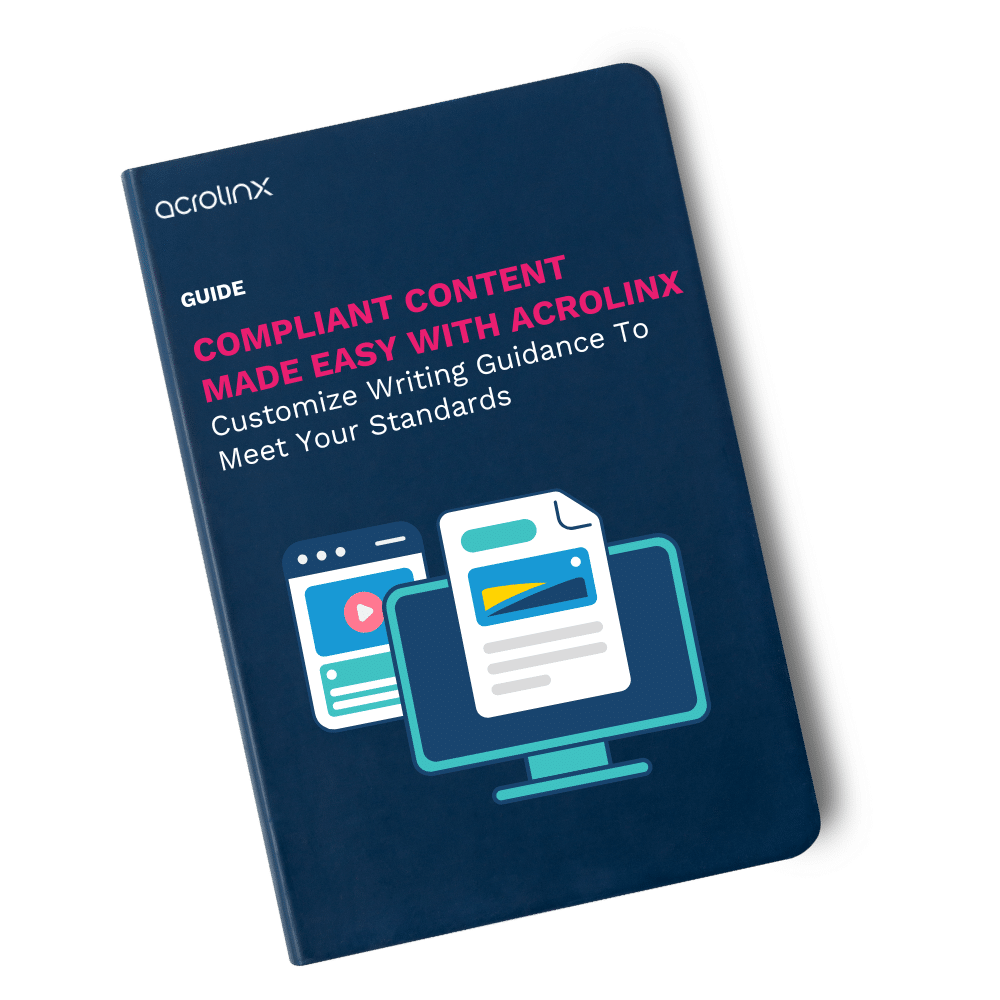AI and Technical Writing: An Overview of Technical Writing Jobs in 2025

AI being commonplace in the enterprise is an exciting prospect. But, for some people within your company, it may raise cause for concern.
Your documentation teams may be wondering: Will AI replace technical writers? Or, will AI take over the world? The short answer: No, it won’t. At least, not anytime soon.
While AI-generated content can be a valuable tool in the technical writing process, it’s important to understand how these tools complement rather than replace human beings. AI advancements enhance the documentation process. But human expertise is still crucial to craft content that resonates with its audience.
In this post, we’ll look at how technical writing careers are changing. We’ll also explore how generative AI helps technical writers. Finally, we’ll discuss what the future may bring for technical writing jobs.
The current state of technical writing careers
The technical writing sector is at a pivotal moment. Many entry-level technical writers today use AI tools to automate tasks and increase productivity. This is great, but what are its lasting impacts? Is this a sustainable way to develop writing skills? It may be too early to tell. What we do know is that AI significantly streamlines workflows.
Generative AI makes documentation faster by automating repetitive tasks like grammar checking, content scoring, and safeguarding terminology consistency. However, AI won’t replace technical writers. Why? Because human insight and deep knowledge of both your audience and information design are vital in technical communication. In 2025, it’s still important that experienced writers provide the necessary technical knowledge to create high-quality technical documentation.
Think of instruction manuals, for example. These require hyper-specific and crystal-clear directions. Any error in creation could be catastrophic for the user who’s reading them — putting your organization in a legal bind. This type of complex information will always require the brain of a human.
AI and technical documentation: The good
AI has become integral for many technical writers, providing invaluable support in creating high-quality documentation. With the proper tools at your disposal, your team speeds up the documentation process, improves accuracy, and focuses more on the creative aspects of writing. Here are some of the biggest benefits of using AI when writing technical documents:
Helpful content suggestions
AI tools help technical writers maintain clarity and accuracy in documentation by suggesting grammar, tone, and phrasing improvements. In technical writing, precision is essential. AI can identify awkward sentences or overly complex language, making sure that instructions are clear and easy to follow. This leads to content that’s more accessible for users, making instruction manuals, user guides, and other technical documents more effective.
Increased efficiency
AI automates repetitive tasks such as correcting minor grammatical errors or making sure that the right technical terms are used throughout the document.
This helps technical writers focus on higher-value activities like refining the structure of complex documentation, organizing content logically, and collaborating with subject-matter experts.
Improved accuracy
AI tools help writers stick to the correct terminology and use it consistently across different document sections. These tools compare terminology against their built-in term lists or an integrated centralized terminology database. This allows them to highlight any discrepancies immediately, improving the overall accuracy of the content.
This is especially helpful in complex documents, where a single mistake can lead to confusion or, worse, errors in product use.
Faster production time
Automated content generation allows you to quickly create initial drafts of technical documents like instruction manuals and user guides.
By providing a first-pass draft, AI gives writers a starting point for more complex sections that would otherwise take considerable time to write from scratch. This speeds up the creation process. It allows writers to focus on the technical details, and refine their content for clarity, compliance, and usability.
AI and technical documentation: The bad
Given all the benefits of using AI for technical writing, who wouldn’t want to use these tools when creating documentation? Well, it’s not necessarily that simple. Despite the undeniable positives, AI will never be as reliable as human technical writers when it comes to creativity, context, and compliance. When using AI to produce technical content, keep in mind the following limitations:
Compliance risks
Making sure that automated content generation follows industry regulations and legal requirements can be challenging. It is even more crucial when different regions, industries, and sectors come into play.
Not every AI tool always captures the subtle differences in language or stays up to date with ever-changing regulatory standards. This leads to compliance failures, especially if AI is used without human oversight.
AI tools aren’t perfect
While AI tools help create the initial draft of a technical document, they need a human touch to produce the final product. Project managers should review AI-generated content to make sure there are no legal, regulatory, or privacy concerns. AI tools highlight potential compliance issues, but it’s up to humans to make final judgments about what needs to be adjusted to meet compliance standards.
Over-reliance on AI
There’s a risk of becoming overly dependent on AI tools for routine tasks. This diminishes the creative aspects of writing, such as critical thinking and the ability to solve complex problems or craft engaging, user-friendly content.
Quality assurance concerns
Yes, AI speeds up content creation. But used inappropriately, it also opens the door to poor content quality. AI hallucinations, where the tool generates content that doesn’t make sense or introduces inaccuracies, slip through the cracks if not carefully monitored. Human oversight is essential to catch these mistakes before they reach the final draft, but even that’s not enough sometimes. This is where AI-powered content QA solutions shine.
Creating technical content using AI tools: Tips and advice
AI is best used as a virtual sidekick, not a source of truth. The goal is to automate the repetitive, time-consuming aspects of documentation creation so writers can focus on crafting technically accurate and engaging content. It’s not about removing any human effort. Finding the right balance between human oversight and AI-generated writing is the secret to success.
After looking at relevant use cases and potential risks of generative AI in technical documentations, here’s some hands-on advice. Let’s explore how to integrate AI into your workflows to get the most out of it:
- Integrate AI into the documentation process: Instead of writing the content in one platform, then transferring it to another for edits, you remove the back and forth. Tools like Acrolinx can provide immediate feedback within your current workspace, helping writers edit, remain compliant, and ensure consistent terminology in real time.
- Automated content checks involve AI-powered tools that automatically analyze content against defined standards. Beyond basic spell check, this ensures terminology consistency, style guide adherence, clarity, and regulatory compliance. Benefits include saving time, reducing errors, accelerating creation, and improving overall documentation quality.
- Train AI tools for industry-specific needs: Customize your AI tools to understand your industry’s technical knowledge and subject-matter experts. Being trained on highly relevant industry content, they generate more accurate and contextually relevant suggestions.
- Use user feedback to improve AI: Feedback from both writers and users is essential for fine-tuning AI tools, helping them adapt to new technologies and industry trends.
The future of Artificial Intelligence and technical documents
So, we’ve established that technical writers need not worry about losing their profession to AI. But that doesn’t mean they shouldn’t plan for the future. We live in an ever-changing digital landscape, and as LLMs continue to evolve, the capabilities of Artificial Intelligence will only increase. Be mindful of these potential changes when using AI in technical writing:
- Increased automation: AI tools will continue to automate more aspects of the documentation process, from content generation to quality assurance, freeing writers to focus on higher-level tasks.
- AI-assisted content customization: More AI tools will offer personalized content suggestions based on audience needs, improving the overall relevance and engagement of technical communication.
- Cross-department collaboration: AI tools will facilitate more collaboration between technical writers, subject-matter experts, and other teams. Producing accurate and comprehensive technical documents at scale becomes easier.
Safeguarding compliant technical writing projects with Acrolinx
Gone are the days where you need to choose between writing efficiency and compliance in technical documentation. Acrolinx’s AI-powered platform provides real-time content suggestions and compliance checks. It helps technical writers produce high-quality, compliant technical documentation faster.
By integrating AI tools with human expertise, Acrolinx helps your team maintain consistency and follow industry regulations. The ultimate result: Better, more accurate content.
Ready to use AI to streamline how your technical writers work? Learn how Acrolinx makes it easy to create compliant content at scale in this eBook.
Are you ready to create more content faster?
Schedule a demo to see how content governance and AI guardrails will drastically improve content quality, compliance, and efficiency.
The Acrolinx Team





